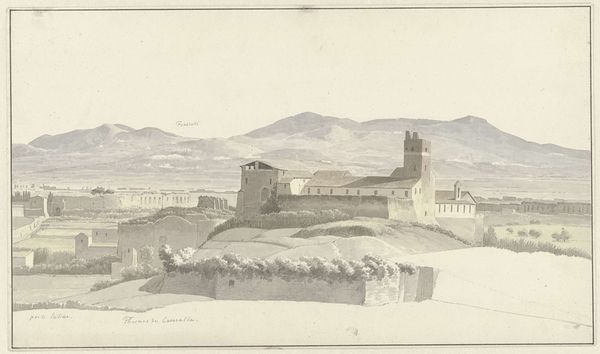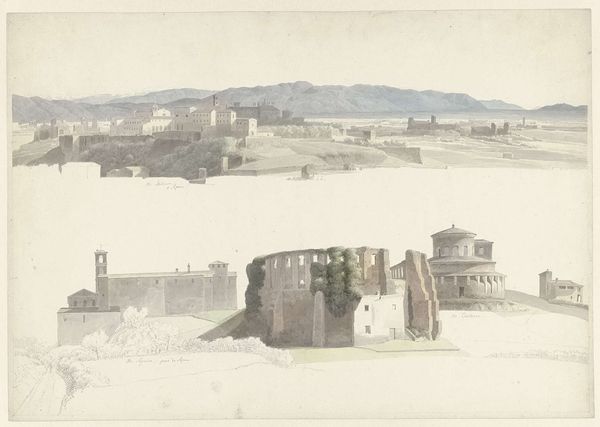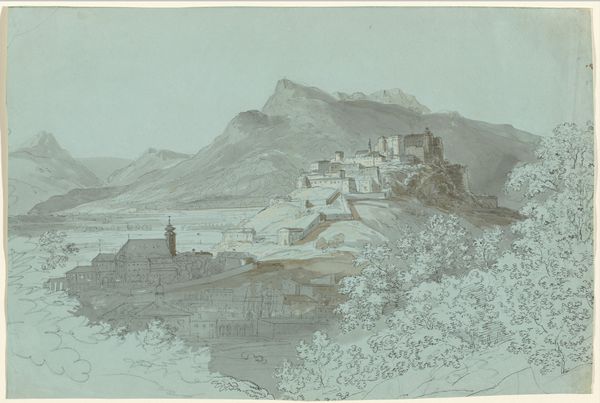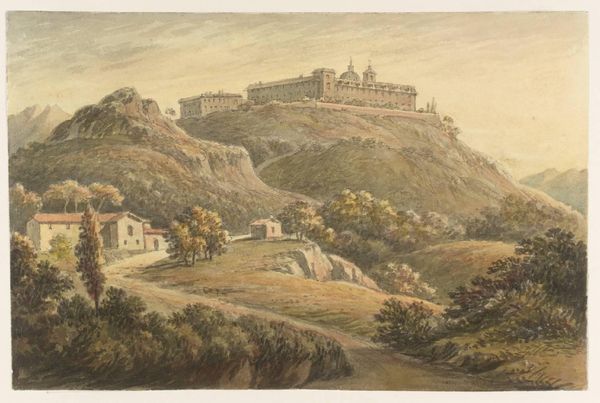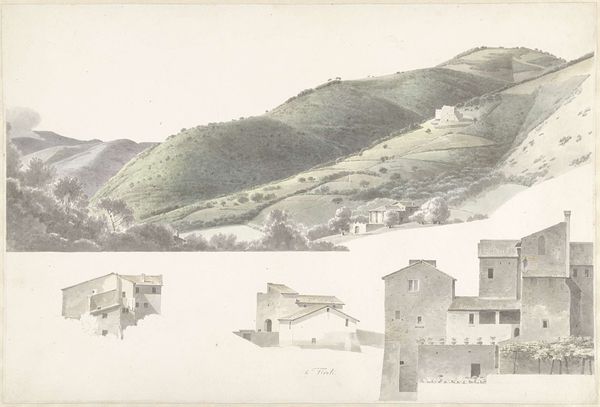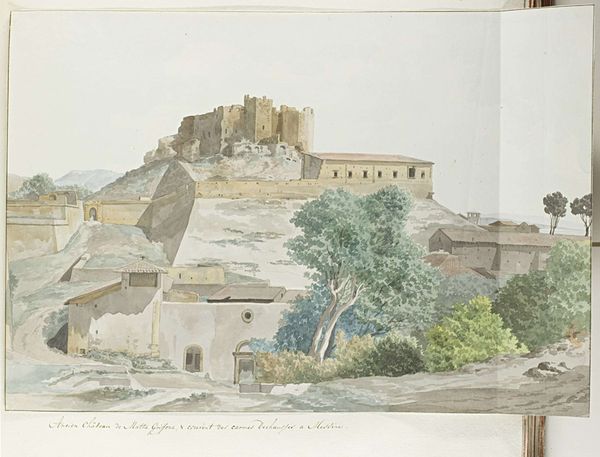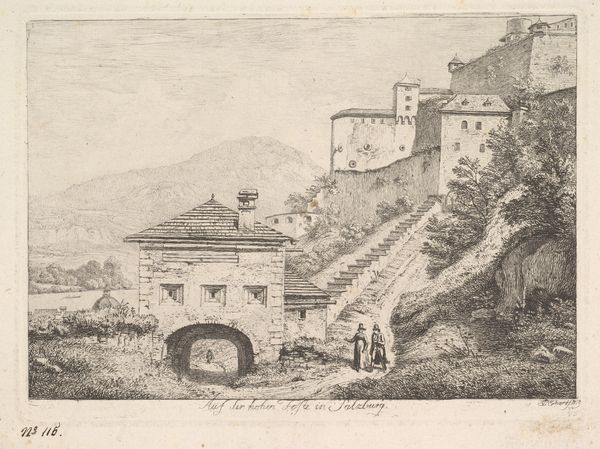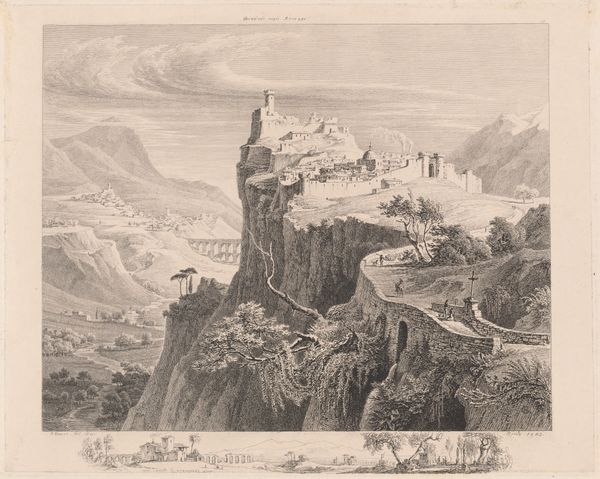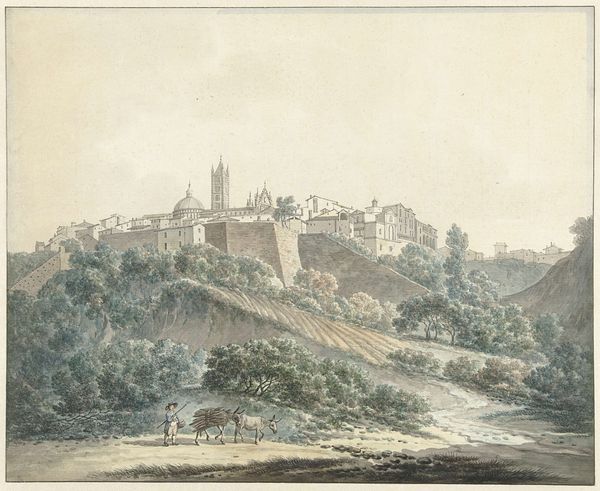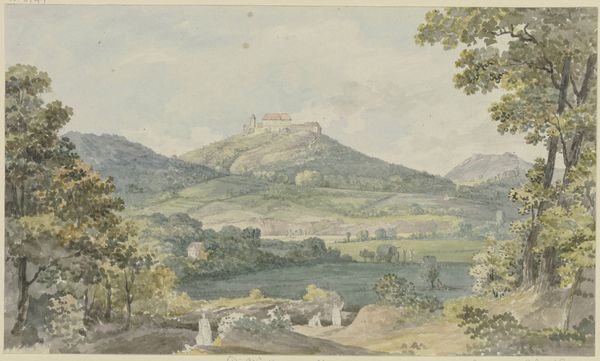
drawing, paper, pencil
#
drawing
#
neoclacissism
#
landscape
#
paper
#
pencil drawing
#
pencil
#
italian-renaissance
Dimensions: height 325 mm, width 471 mm
Copyright: Rijks Museum: Open Domain
Editor: Josephus Augustus Knip’s “Italian Landscape near Subiaco,” a pencil drawing on paper, made sometime between 1787 and 1847, presents this tranquil yet majestic landscape, capturing a distant building. How would you interpret the significance of this work within its historical context? Curator: It's interesting to consider Knip’s "Italian Landscape near Subiaco" through the lens of the Grand Tour phenomenon. This was a period where wealthy Europeans, primarily aristocrats, traveled to Italy seeking cultural enrichment, which dramatically shaped perceptions of Italy in the north of Europe. How might Knip's rendering cater to or challenge existing stereotypes and expectations of this cultural moment? Editor: Well, the soft rendering almost seems to idealize Italy, as though catering to the romantic visions the Grand Tourists came seeking. Do you think Knip's use of the pencil—this humble, accessible medium—affects how the landscape is perceived? Curator: Absolutely. Pencil drawings in this era had a complicated position. While considered preparatory sketches in academic painting, the accessibility of the medium democratized art-making, and therefore art viewing. It invites a wider audience to see, participate, and even idealize the Roman Italian landscape that he depicts, though. Editor: That's a good point. I was also struck by the inclusion of the figure in what seems to be local dress, almost staged in the landscape. Curator: The inclusion of such a figure highlights the visual rhetoric of picturesque landscapes, making viewers think of class and power relations by constructing and reinforcing existing socio-political hierarchies. Where do you think this places Knip and his artwork within these complex power dynamics? Editor: Considering the political landscape, with rising nationalism and changing power structures, it almost seems like Knip is freezing a moment in time, or solidifying the "Italian Landscape" in opposition to rising sentiments of Italian unification. Curator: Indeed. By focusing on specific landmarks like the fortress, Knip subtly emphasizes continuity with the Roman past. Thank you for your observations, it highlights Knip's negotiation with his audiences and political context, prompting us to reconsider simplistic notions of idealized landscapes. Editor: It was insightful for me too, looking at how these works relate to larger social trends and political meanings.
Comments
No comments
Be the first to comment and join the conversation on the ultimate creative platform.

